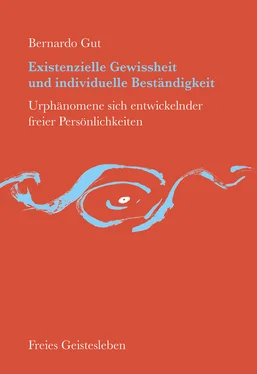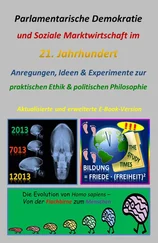1 ...6 7 8 10 11 12 ...15 The (a)is certainly the basic, most important pattern, the one Adolf Reinach had centred his analysis on. If A promises B to bring him tomorrow the book, he had borrowed from him, B has received a claim-right, whereas A is bound by a duty.
A simple example for (b): A has the privilege to freely use his own smart-phone, whereas B doesn’t have any right to use A ’s phone without the latter’s consent. A ’s privilege means that he has the liberty to do something: to use his own phone, to enter his home, to ride his bicycle – but B has no right to do the very same things with A ’s belongings – without A ’s permission.
Following Hohfeld, we have to distinguish between claims ( rights proper) and liberties (based on privileges ) enabling us to do or to refrain from doing something. – ( Powers and immunities refer to second order claims and privileges.)
Although the four pairs of Jural Correlatives belong to the vast group of relative legal structures, the liberty to do or to refrain from doing something unveils an individual privilege and faculty that surpasses the ordinary level of relative legal relationships, and points to an absolute right (in the sense of liberty ) enabling oneself to act in an independent way.
3.As soon as a child negates to do – or rather to stop doing something his mother has demanded, we perceive how the sense of being an individual with his own sovereign will has awakened the child’s self-consciousness. This is merely a first step. «As soon as a child invokes the principles of equality, consistency, and adherence to a promise or a rule – to argue, for example, that he has a right to a certain toy because his brother had it earlier and because they always take turns with it and because it is his and because his father said so – then it makes sense to speak of an appeal to Right or to Law.» (H. J. Berman 7) These observations underline the crucial significance the awakened ability and the courage to negate obedience to authority enables and triggers the young individual to develop his self-confidence and confirm himself as an independent, potentially free personality.
4.Parallel to the ripening personal confidence, the young adult normally becomes aware of other individuals bearing and unfolding individual, personalised traits of many characters common to virtually all human individuals. And he perceives, how these other individuals assert, maintain, partly modify – and as a whole stand to their personalised qualities and traits. If this process leads me, as well as my fellow beings to recognise in each other a mutually equivalent personal dignity, albeit as individuals largely differing regarding the external appearances, the main interests, the abilities, the innermost convictions, and the like – then we are prepared to get acquainted with the elementary and fundamental individual rights and liberties, to discuss them, and – eventually, and hopefully – to adhere and defend them in our own, independent, personal way.
5.Carlos Santiago Nino (3.11.1943–29.8.1993) proposed three fundamental individual rights, and he added a fourth one, the hedonistic right. What Nino concentrated on, are rights to do or to abstain from doing certain things: «to profess or not to profess a religion, to express ideas, to undertake any job or enterprise, to associate with others, to move from one place to another, to engage in sexual practices or personal habits, etc. … [These rights are very broad and generic and suggest that perhaps they] … derive from a general principle which proscribes interference with any activity which in turn does not interfere with the activity of other people.» (C. S. Nino 12, p. 130):
(1) The Principle of Personal Autonomy;
(2) The Principle of the Dignity of the Person;
(3) The Principle of Inviolability of the Person;
(4) The Hedonistic Principle. –
The fundamental principle (1) conveys to every individual the personal liberty to choose his aim and purpose in life, and his way of life – as long as he concedes equal liberties to his fellow human beings.
The second principle (2 ) demands that nobody be ever permitted to withdraw the individual, personal dignity of another human being. Nobody is ever allowed to withdraw from a human being the basic right, to be acknowledged as an individual subject with the right to defend his personal identity and subjectivity.
The third principle (3) stipulates that nobody is ever allowed to torture, wound, torment a human being, whether physically nor psychologically.
The fourth principle (4) grants to every human being the privilege to enjoy pleasure and to strive for the absence of pain – considering these experiences as basic gifts of human life. –
Im ersten Teil unserer Betrachtungen 1ging es um die Frage, ob es «objektive, apriorische Rechtsgesetze, d.h. rechtliche Urphänomene» 2gebe. Anknüpfend an Adolf Reinachs Habilitationsschrift Die apriorischen Grundlagen des bürgerlichen Rechtes (1913) 3, ließ sich am Phänomen des Versprechens und dessen Implikationen aufzeigen, dass im dadurch eröffneten Bereich der Pflichten und Rechte relativer Natur in der Tat objektive, begriffsimmanente, aus dem Versprechen selbst sich herleitende Grundgesetze gelten. Hinsichtlich der Frage, ob entsprechende Urphänomene auch in absolutem Sinne auffindbar seien, ergab sich eine affirmative Antwort im Falle eines Versprechensadressaten, der darauf verzichtet, dass sein Anspruch von dem Versprochenhabenden erfüllt werde, wodurch er Letzteren von der eingegangenen Verpflichtung entbindet. Offen blieb jedoch, ob es nebst dem Verzichten – welches zumal als ein inhaltlich negatives formales Recht erscheint – noch andere absolute Rechte, namentlich auch solche positiven Inhaltes, gebe.
Dementsprechend schloss der genannte Aufsatz mit zwei Fragen:
(i) Gibt es absolute Rechte positiver inhaltlicher Sozialnatur?
(ii) Lassen sich aus dem Begriff der sich auf Individualität gründenden Persönlichkeit absolute Rechtsprinzipien herleiten, die den Eigentümlichkeiten der verschiedenen Rechtsgemeinschaften vorausgehen?
Um einzelne Aspekte dieser Fragen geht es in den folgenden Ausführungen. Ehe wir sie angehen können, müssen wir jedoch zuerst sowohl die Kennzeichen der Rechtssphäre als auch die damit korrelierten Wesensmerkmale der sie Konstituierenden und eo ipso darin Einbezogenen schärfer ins Auge fassen.
1. Kennzeichen der Rechtssphäre
Wann immer es darum geht, Erkenntnisse zu gewinnen, intendieren wir einen Gegenstandsbereich und stecken alsdann das zu betrachtende Feld ab, indem wir Fragestellung und Gegenstand aufeinander abstimmen und die adäquate Vorgehensweise festlegen. Je nach der Beschaffenheit und dem Zusammenspiel dieser Komponenten erhalten wir Zugang zu unterschiedlichen Erkenntnissphären, von denen ich hier zunächst zwei herausgreife:
a) Im Falle der axiomatisierten , reinen Mathematik eröffnet der Mathematisierende – erkenntnislogisch betrachtet – mit der in den Postulaten spezifizierten Erkenntnisintention den jeweiligen Forschungsbereich und bringt dadurch dessen Gegenstände zuallererst in die Sicht. Indem er danach die postulierte Intention befolgt, gelangt er zuerst zu den Axiomen (Grundgesetzen), welche der Intention entsprechen und sich unmittelbar daraus ergeben – und daraufhin zu den aus den gesetzten Forderungen und den zugehörigen Axiomen ableitbaren Theoremen (Folgesätzen);
Читать дальше












